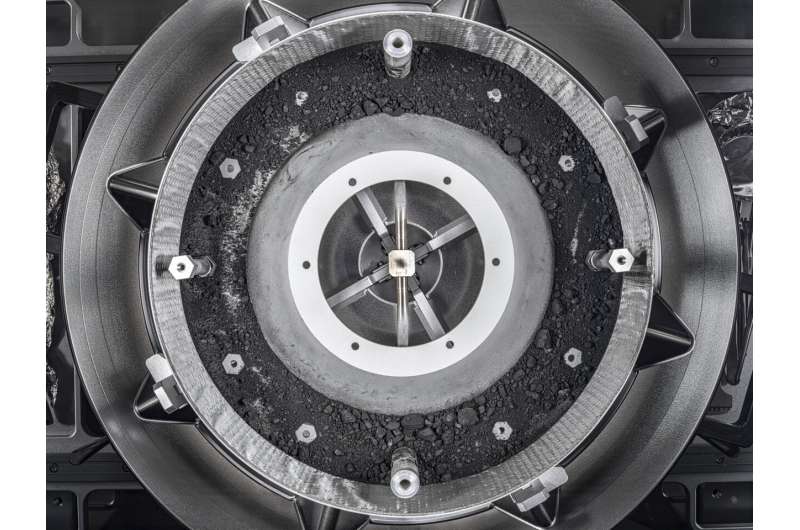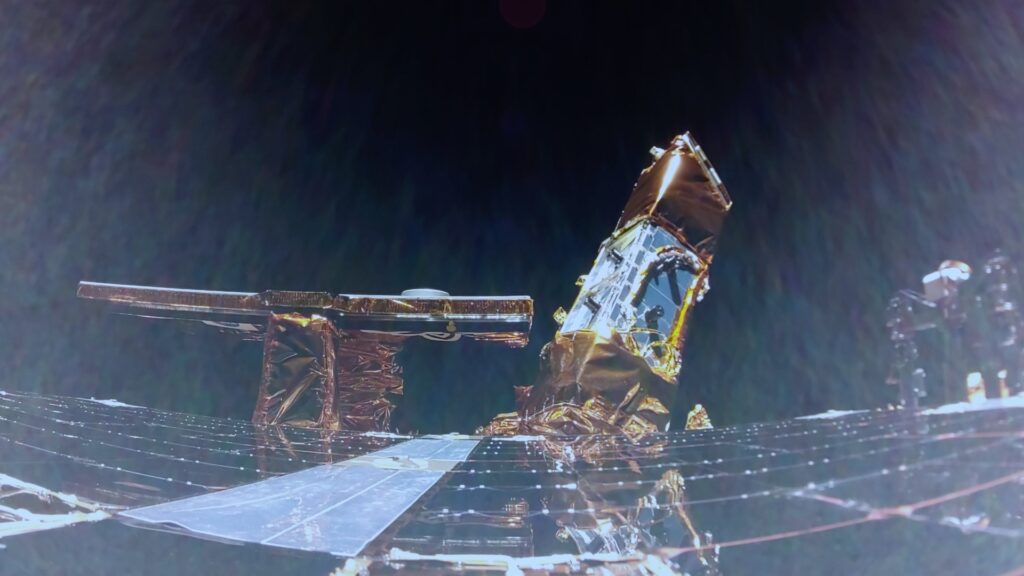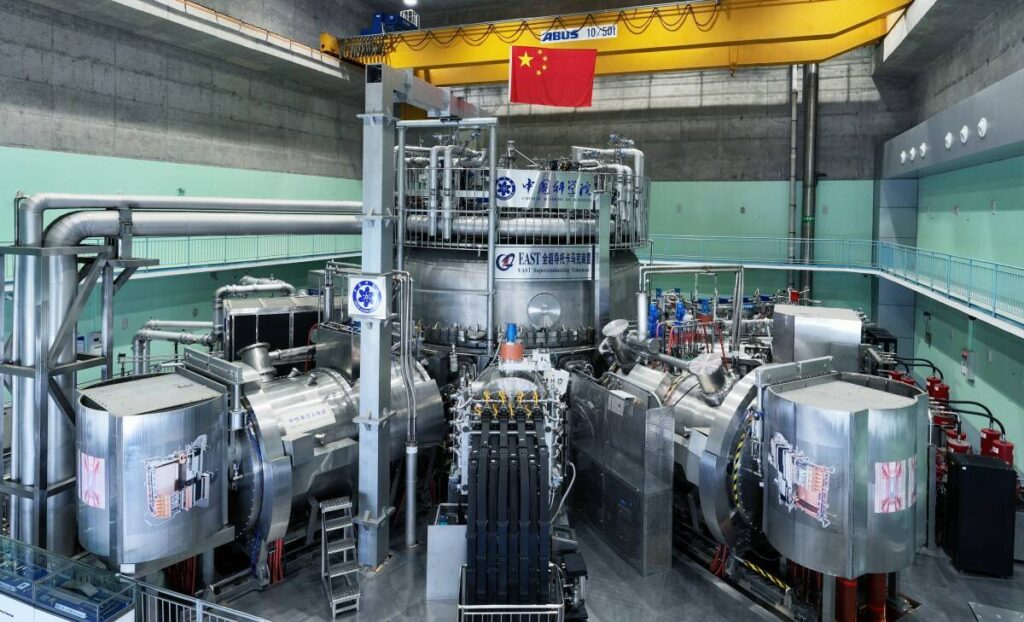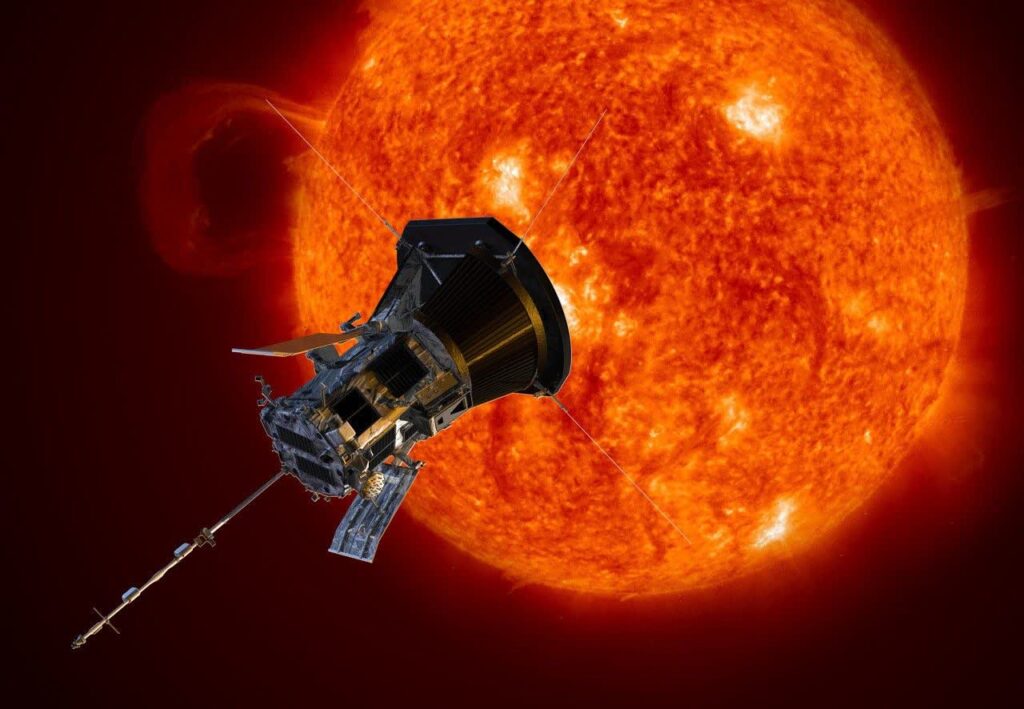‘Fireflies’ help NASA map radiation around Jupiter and its moons
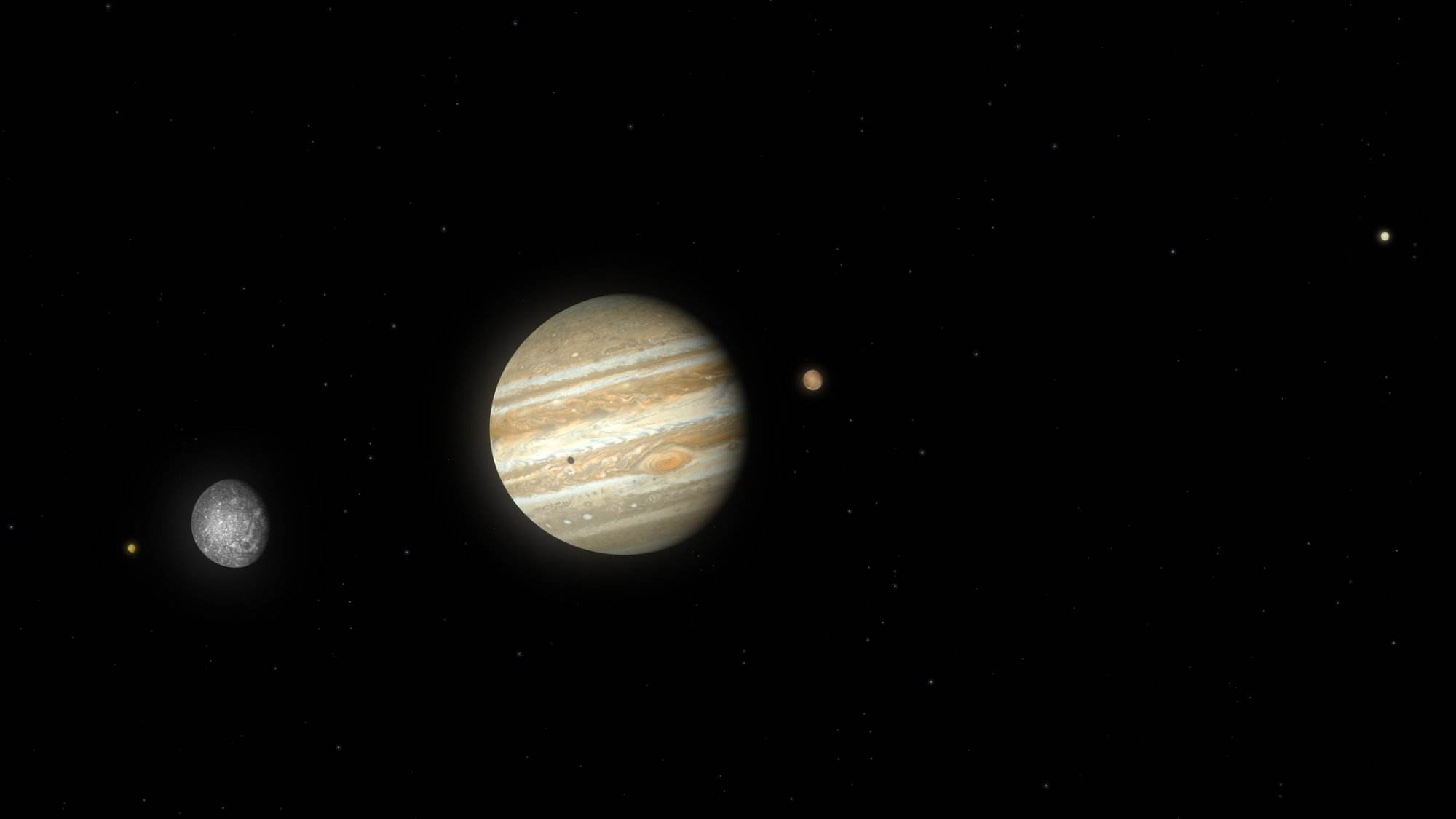
NASA Space Technology

The first ever 3D radiation map of Jupiter and its moons has been created using low-light cameras aboard the Juno Spacecraft that have been tweaked to operate as radiation detectors.
The map reveals how Jupiter’s powerful magnetosphere influences the radiation environment around one of the gas giant’s moons, Europawhich is crucial for understanding the moon’s surface chemistry, potential habitability, and the challenges of future space missions to this icy world.
“This is the first detailed radiation map of the region at these higher energies, which is a major step in understanding how Jupiter’s radiation environment works,” said Scott Bolton, Juno principal investigator from the Southwest Research Institute in San Antonio, in a NASA statement. “This will help planning observations for the next generation of missions to the Jovian system.”
The team optimized Juno’s Advanced Stellar Compass (ASC) and Stellar Reference Unit (SRU) for this mission. The ASC, which includes four cameras, was not initially designed to measure radiation, but instead was made to capture images of stars that help determine the spacecraft’s orientation in space. It also serves as an attitude reference for magnetic field investigations by monitoring how many high-energy particles from Jupiter’s magnetosphere impact the spacecraft.
When these particles interact with the ASC instrument, they leave behind a signature streak of light that can be counted to determine the amount of radiation the spacecraft is flying through.
“Every quarter-second, the ASC takes an image of the stars,” said Juno scientist John Leif Jørgensen of the Technical University of Denmark in NASA’s statement. “Very energetic electrons that penetrate its shielding leave a telltale signature in our images that looks like the trail of a firefly. The instrument is programmed to count the number of these fireflies, giving us an accurate calculation of the amount of radiation.”
Similarly, the SRU, a sensitive visible light camera, helps determine the spacecraft’s orientation in space. The data collected by both cameras complements each other, allowing scientists to characterize the radiation environment across different energy levels.
Using this new approach to their data, the scientists unexpectedly found a flow of high-energy particles near one of Jupiter’s moonsEuropa. This distribution is affected by both the planet’s rotation and the movement of the electrons from Jupiter’s magnetosphere, which are swept around the planet at high speeds due to its rotation.
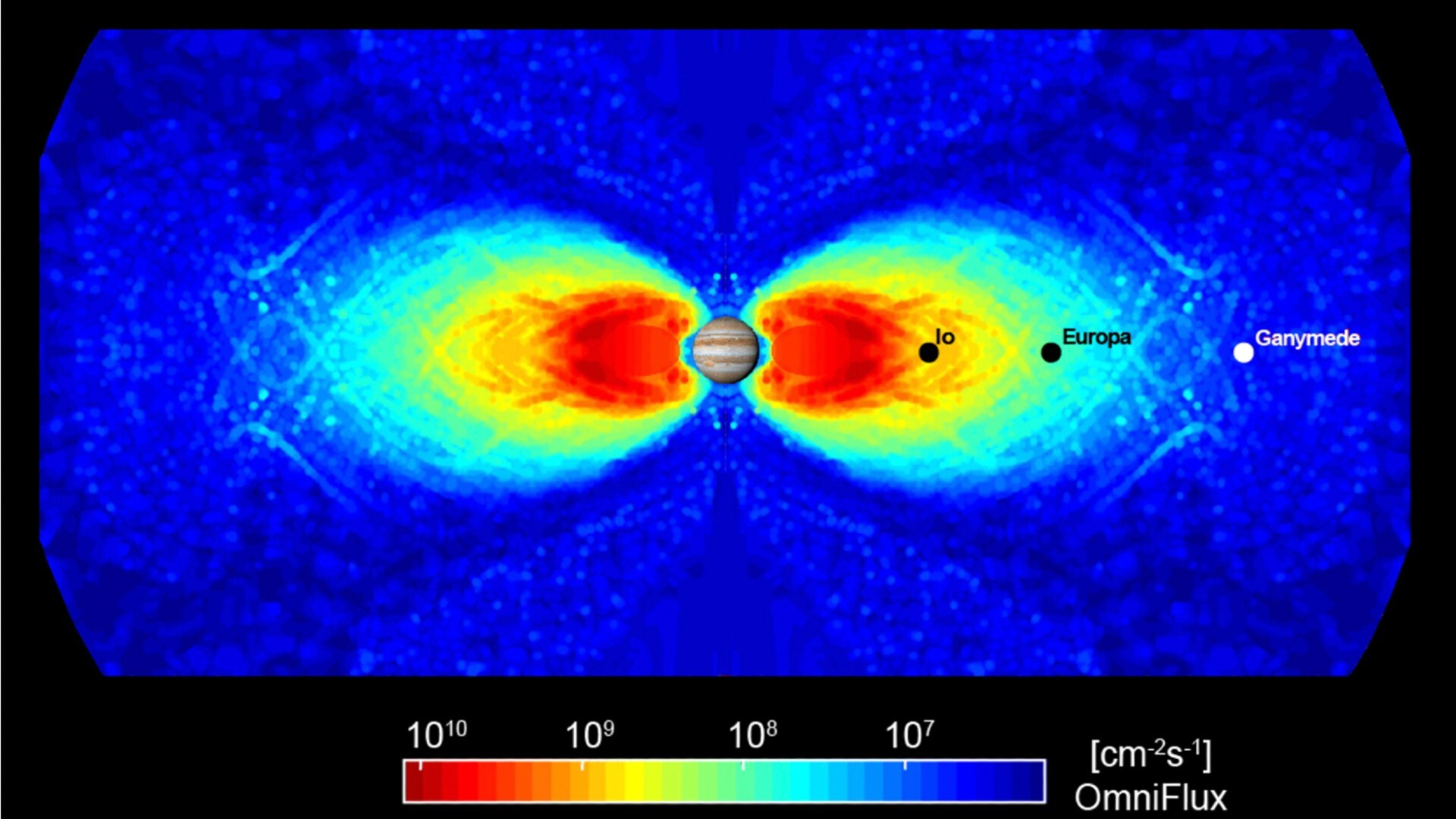
As Europa orbits the gas giantthese electrons move faster, overtaking the moon from behind and building up on its trailing side. However, the team also observed that the highest-energy electrons among this swarm behave differently. They drift “backward” relative to the rest of the magnetospheric flow, almost as if they were swimming against the current. As a result, they collide with Europa’s leading side facing in the direction of the moon’s motion.
From the data, they team were able to observe that small “shepherd moons” orbiting near Jupiter’s rings also interact with the planet’s radiation environment, much like Europa. Specifically, when Juno’s spacecraft flies along magnetic field lines that connect to these moons or dense dust around the rings, the radiation levels detected by the ASC and SRU significantly decrease. This suggests that these moons or dust structures influence or shield the surrounding radiation. Additionally, the SRU is capturing rare low-light images of Jupiter’s rings from Juno’s unique perspective, providing valuable visual data of this region.
“There is still a lot of mystery about how Jupiter’s rings were formed, and very few images have been collected by prior spacecraft,” said Heidi Becker, lead co-investigator for the SRU and a scientist at NASA‘s Jet Propulsion Laboratory in Southern California, which manages the mission.
“Sometimes we’re lucky and one of the small shepherd moons can be captured in the shot. These images allow us to learn more precisely where the ring moons are currently located and see the distribution of dust relative to their distance from Jupiter.”
Juno launched from Cape Canaveral Space Force Station in 2011, and has since provided unprecedented insights into the Jovian system, including discovering salts and organic compounds on the surface of GanymedeJupiter’s largest moon, and observing active volcanoes on the surface of another one of the gas giant’s four largest satellites, Io.
Join our Space Forums to keep talking space on the latest missions, night sky and more! And if you have a news tip, correction or comment, let us know at: [email protected].



 Hot Deals
Hot Deals Shopfinish
Shopfinish Shop
Shop Appliances
Appliances Babies & Kids
Babies & Kids Best Selling
Best Selling Books
Books Consumer Electronics
Consumer Electronics Furniture
Furniture Home & Kitchen
Home & Kitchen Jewelry
Jewelry Luxury & Beauty
Luxury & Beauty Shoes
Shoes Training & Certifications
Training & Certifications Wears & Clothings
Wears & Clothings





